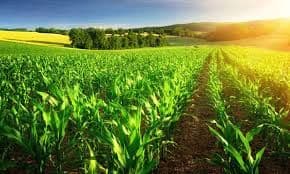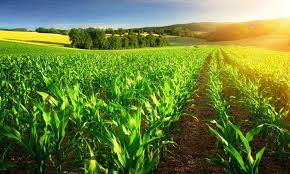
a Guide to Organic Farming Equipment
Organic farming became popular during the early 20th century and now accounts for a whopping 70 million hectares of land and continues to rise.
India is home to 30% of organic producers worldwide, comprising 2.30 million hectares. Moreover, the organic farmers market is anticipated to grow at a CAGR of about 20.5% between 2021 and 2026 and attain a value of about USD 2601 million by 2026.
With projections like these, one can't deny that organic farming is real and here to stay!
Rightly said, "Organic farms that provide large-scale production of crops will still need equipment to realistically profit from large acreage."
Organic farms are most commonly defined by their use of fertilizers that are organic in nature, fertilizers such as green manure, bone meal and bio compost.
In addition, sustainability is an important element of organic farming, such as companion planting, mixed crops, crop rotation, biological pest control and encouraging the use of insect predators.
Moreover, there is an emphasis on new farming techniques and technologies. For example, organic farming heavily relies on high-power tractors like Swaraj 742 to push and pull farm implements.
Basic Farming Equipment Choices
While fertilizers and crop-growing methods may vary from traditional farming practices. Large-scale modern organic farming largely relies on conventional farming machinery, such as:
Tractors
Cultivators
Ploughs
Tillers
Combine Harvesters
Seed Drills
Air Seeders
Transplanters
Backhoes
Front-loaders
Some farmers feel a big part of the choice to be an organic farmer is to avoid using big machinery and reduce carbon footprints. Small patches of farmlands could be cultivated by hand to prevent the usage of clunky machinery.
However, organic farms that provide large-scale production of crops will need equipment to profit from a large acreage realistically. Without any mechanical help, this can be much more difficult.
To ensure a more sustainable approach and reduce carbon footprints. Many farmers opt for electrically powered equipment to avoid the use of petroleum.
However, other resources are available for a more antique approach, like pitching a used tractor and implements. A high-powered used tractor like the Swaraj 963 is better than crafting new equipment and promotes sustainability through Reduce, Recycle and Reuse!
Organic Farm Equipment For Weed Control
A growing number of manufacturers are creating more eco-friendly machinery that reduces weeds and stimulates plant growth.
For example, tined weeders are a long-standing method of removing unwanted plants between rows. Still, more innovative machinery is under development to eliminate weed growth between plant rows and avoid harmful weedicides.
Organic farmers often benefit from the multipurpose use of equipment that works on turf and farmland patches.
Tools like comb harrows have fine springs mounted on a flexing frame and can be used for weed removal and breaking crapped earth.
The loosening of soil enables more air, fertilizers, and nutrients to reach the root nodules. Additionally, tined weeders and chain harrows also prepare seedbeds for sowing.
Chain harrows and tined weeder attachments on a powerful tractor like the

can achieve all these goals. Making a widely used choice for organic farmers.
Organic Farm Equipment Used For Dairy Farming
Organic dairy farmers strive to get more out of their dairy slurry. But first, let's get familiar with the term slurry. The slurry is an organic fertilizer from cow dung and water to encourage grass growth.
Therefore, Compact, low-cost bedding recovery units can be used with portable slurry separators. This reduces the requirements of large slurry pits filled with a mixture of unusable matter.
Organic Farm Equipment Used for Manure Spreading
The core idea of organic farming is using more nutrients and fibrous materials and avoiding wastage. This concept drives sustainability and organic crop growth.
Thus, modern side-discharge and rear-discharge spreaders continually improve organic farms' manoeuvrability and durability. These machines finely shred the fibrous manure content and enhance the soil's organic profile.
Equipment Transport for Organic Farming
A fine Swaraj 742 tractor is one of the dedicated instruments for farmers. Farming is one of the crucial tasks on the planet, and inhabitants rely on this survival method.
Hence, hi-tech machinery is now more important than ever to feed the masses and meet demands.
Finally
Organic farming is a welcome alternative to the destructive tendencies of industrial agriculture. It is set to rise upwards in the future! The only choice is how advanced you want your equipment and how much you are prepared to pay.
Frequently Asked Questions on Organic Farming Equipment
What is organic farming equipment?
Organic farmers use a variety of equipment like tine weeders, cultivators, weed zappers and manure spreaders.
What are the 4 methods of organic farming?
The four principal organic farming methods are crop rotation, green manures, biological pest control and mechanized cultivation.
Which crop is best for organic farming?
Some crops suitable for organic farming are maize, barley, wheat and sunflowers.
What are the 2 types of organic farming?
Organic farming is generally two types: integrated and pure.
Who is the father of organic farming in India?
The father of Indian Organic Farming is Subhash Palekar.
Appreciate the creator